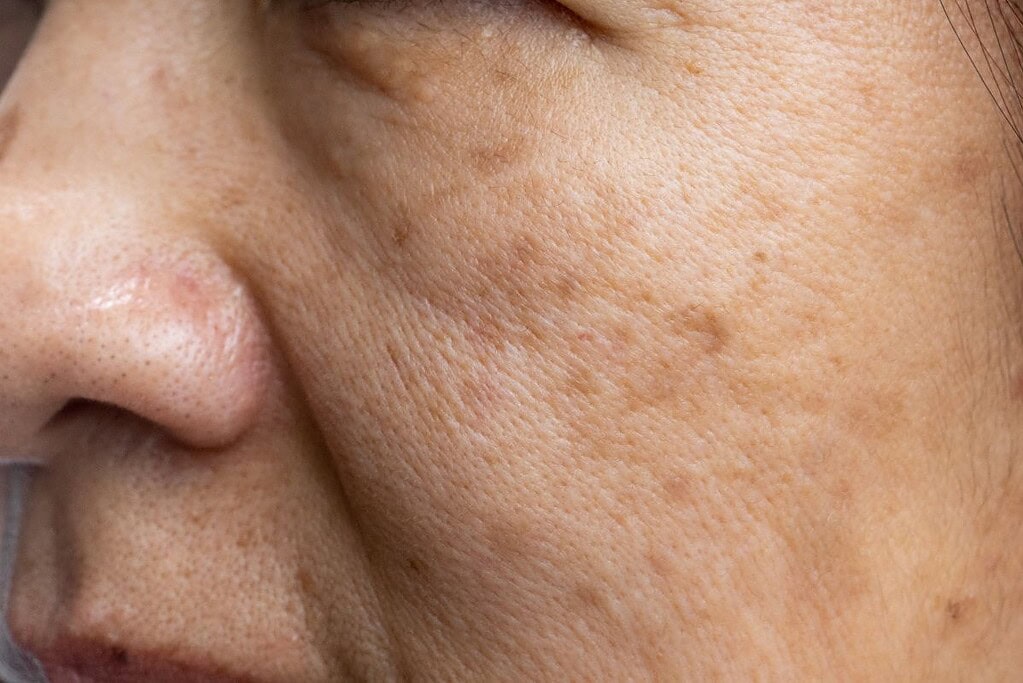Melasma, often referred to as the “mask of pregnancy” due to its association with hormonal changes, is a common skin condition that causes dark patches, usually on the face. It can affect anyone, regardless of age or skin type. While melasma is not harmful, it can significantly impact one’s self-esteem and confidence. If you’ve been dealing with melasma and are ready for clearer, brighter skin, it’s time to explore the most effective treatment options available.
In this article, we will guide you through everything you need to know about melasma, its causes, symptoms, and the most effective treatments so you can confidently say goodbye to those dark spots for good.
Understanding Melasma: What It Is and What Causes It
What Is Melasma? A Comprehensive Overview
Melasma is a skin condition that causes brown or grayish-brown patches to form on the face, most commonly on the cheeks, forehead, upper lip, and chin. It occurs when the skin produces excess melanin, the pigment responsible for the color of your skin. The condition can vary from mild to severe and often appears symmetrically on both sides of the face.
It is most common in women, particularly those of childbearing age, though men can also be affected. While melasma is not dangerous, it can be a frustrating and persistent problem.
Common Causes of Melasma: Hormones, Sun Exposure, and Genetics
The exact cause of melasma isn’t entirely understood, but several factors contribute to its development:
- Hormonal changes: Melasma is often triggered by hormonal fluctuations, especially during pregnancy, birth control use, or hormone replacement therapy. This is why it’s sometimes called the “mask of pregnancy.”
- Sun exposure: UV rays from the sun stimulate melanocytes (pigment-producing cells), making melasma worse. The sun’s UV light is one of the primary triggers for this condition.
- Genetics: If someone in your family has melasma, you are more likely to develop it. Family history plays a role in susceptibility.
How Melasma Affects the Skin and Appearance
Melasma causes uneven pigmentation, which can significantly affect one’s appearance. The dark patches tend to appear more noticeable when exposed to the sun and can worsen if left untreated. Though melasma isn’t painful, the emotional impact can be significant, especially if the patches are in visible areas like the face.


Identifying the Symptoms of Melasma: Is It Time to Seek Treatment?
Early Signs of Melasma: What to Look For
The first signs of melasma usually involve the appearance of brown or grayish-brown patches on the face. The color can vary, but these patches are often symmetrical on both sides of the face. The skin may also appear uneven and blotchy.
If you notice these spots appearing, especially if you have a history of hormonal changes or sun exposure, it’s important to seek advice from a dermatologist as early intervention can lead to better treatment outcomes.
Melasma vs. Other Skin Conditions: How to Differentiate
Melasma often gets confused with other skin conditions such as freckles, age spots, or post-inflammatory hyperpigmentation. The key difference is that melasma typically appears as larger, more diffuse patches that are symmetrical. Other conditions may present as smaller, more defined spots.
A dermatologist can help you accurately diagnose the condition and distinguish it from other skin issues.
When Should You Consult a Dermatologist About Melasma?
If melasma is causing distress or if the patches are not improving with over-the-counter products, it’s a good idea to consult a dermatologist. A dermatologist can offer treatments tailored to your specific skin type and melasma severity, helping you find the most effective solution.
Top Proven Treatments for Melasma
Melasma can be stubborn, but with the right treatment, it’s possible to reduce or eliminate the dark patches. Here are some of the most proven treatments available:
Topical Treatments for Melasma: Hydroquinone, Retinoids, and More
- Hydroquinone: Often considered the gold standard for treating melasma, hydroquinone lightens dark patches by inhibiting melanin production. It is available in various strengths and can be prescribed by a dermatologist.
- Retinoids: Retinoids help accelerate skin cell turnover, which can lighten melasma over time. These are commonly used alongside other treatments like hydroquinone to enhance results.
- Other Topical Agents: Products containing ingredients like azelaic acid, kojic acid, or Vitamin C can also help lighten melasma by inhibiting melanin production and improving skin texture.
Chemical Peels: A Deeper Solution to Fade Melasma
Chemical peels use acids to exfoliate the skin, removing the outer layer and revealing fresher, more even skin beneath. For melasma, deeper chemical peels like glycolic acid or TCA (trichloroacetic acid) can help fade the dark spots by accelerating skin cell turnover. These treatments need to be done by a professional in a clinic setting for optimal results and safety.
Laser Treatments for Melasma: How Effective Are They?
Laser treatments, such as fractional CO2 lasers and Q-switched lasers, target pigment in the skin, breaking it down and encouraging the body to clear it away. Laser treatments are effective for many people, but they can cause side effects like irritation or darkening of the skin in some cases. It’s crucial to consult with a dermatologist to determine the right type of laser for your skin type and condition.
Our Melasma Treatment Services
Natural Remedies for Melasma: Can You Treat It at Home?
Popular Home Remedies: Are They Worth the Hype?
There are many home remedies suggested for treating melasma, such as lemon juice, turmeric, and apple cider vinegar, but the effectiveness of these treatments is not well-supported by clinical evidence. While they may offer mild improvement, they are unlikely to produce the same results as professional treatments like topical agents or laser therapies.
The Power of Vitamin C in Brightening and Treating Melasma
Vitamin C is a powerful antioxidant known for its skin-brightening properties. Topical Vitamin C can help reduce pigmentation and improve overall skin tone. It works by inhibiting melanin production and neutralizing free radicals caused by sun exposure.
How Diet and Lifestyle Can Impact Melasma
Your diet and lifestyle can affect the severity of melasma. A diet rich in antioxidants, such as fruits, vegetables, and Omega-3 fatty acids, can help reduce skin inflammation and support overall skin health. Avoiding excessive sun exposure and managing stress are also crucial factors in preventing melasma flare-ups.
Melasma Prevention: How to Protect Your Skin and Prevent Recurrence
Daily Sunscreen Habits: A Must for Preventing Melasma Flare-Ups
One of the most effective ways to prevent melasma from worsening is by applying sunscreen daily. Even if you’re indoors, UVA rays can penetrate windows and trigger melasma. Choose a broad-spectrum sunscreen with an SPF of at least 30 and reapply every two hours when outdoors.
The Importance of Protective Clothing and Shade
Wearing wide-brimmed hats, sunglasses, and seeking shade during peak sun hours (10 a.m. to 4 p.m.) can reduce your exposure to UV rays and help protect your skin from melasma flare-ups.
Avoiding Triggers: Hormones, Stress, and Environmental Factors
Since hormonal changes and stress are major triggers for melasma, managing stress levels through yoga, meditation, and a balanced lifestyle can help. Additionally, avoiding environmental pollutants and other irritants can minimize the chances of melasma returning.
FAQ – Frequently Asked Questions
1. Can melasma go away on its own?
In some cases, melasma can fade over time, especially if it’s related to pregnancy or birth control use. However, treatment is often necessary to speed up the process and prevent it from coming back.
2. Are laser treatments safe for treating melasma?
Yes, laser treatments are generally safe when performed by a qualified dermatologist. However, they may not be suitable for all skin types, and results can vary.
3. How long does it take to see results from melasma treatments?
The time it takes to see results depends on the treatment method. Topical treatments may take several weeks, while chemical peels and laser treatments may show results within a few sessions.
4. Is melasma permanent?
Melasma can be persistent, but with the right treatment, it can be significantly reduced or even eliminated. Preventative measures, such as sun protection, are crucial in preventing recurrence.
5. When should I see a dermatologist about melasma?
If melasma is affecting your quality of life or if over-the-counter treatments aren’t effective, it’s time to consult a dermatologist. They can recommend the best course of treatment based on your skin type and the severity of the condition.
References:
1.Everything You Need to Know About Melasma
Contact Siam Clinic Phuket
- phone : 088-488-6718 and 093-692-5999
- Email : info@siamclinicphuket.com
- Facebook inbox : https://m.me/siamclinicthailand
- Instagram : https://www.instagram.com/siamclinic
- Whatsapp : https://whatsapp.com



